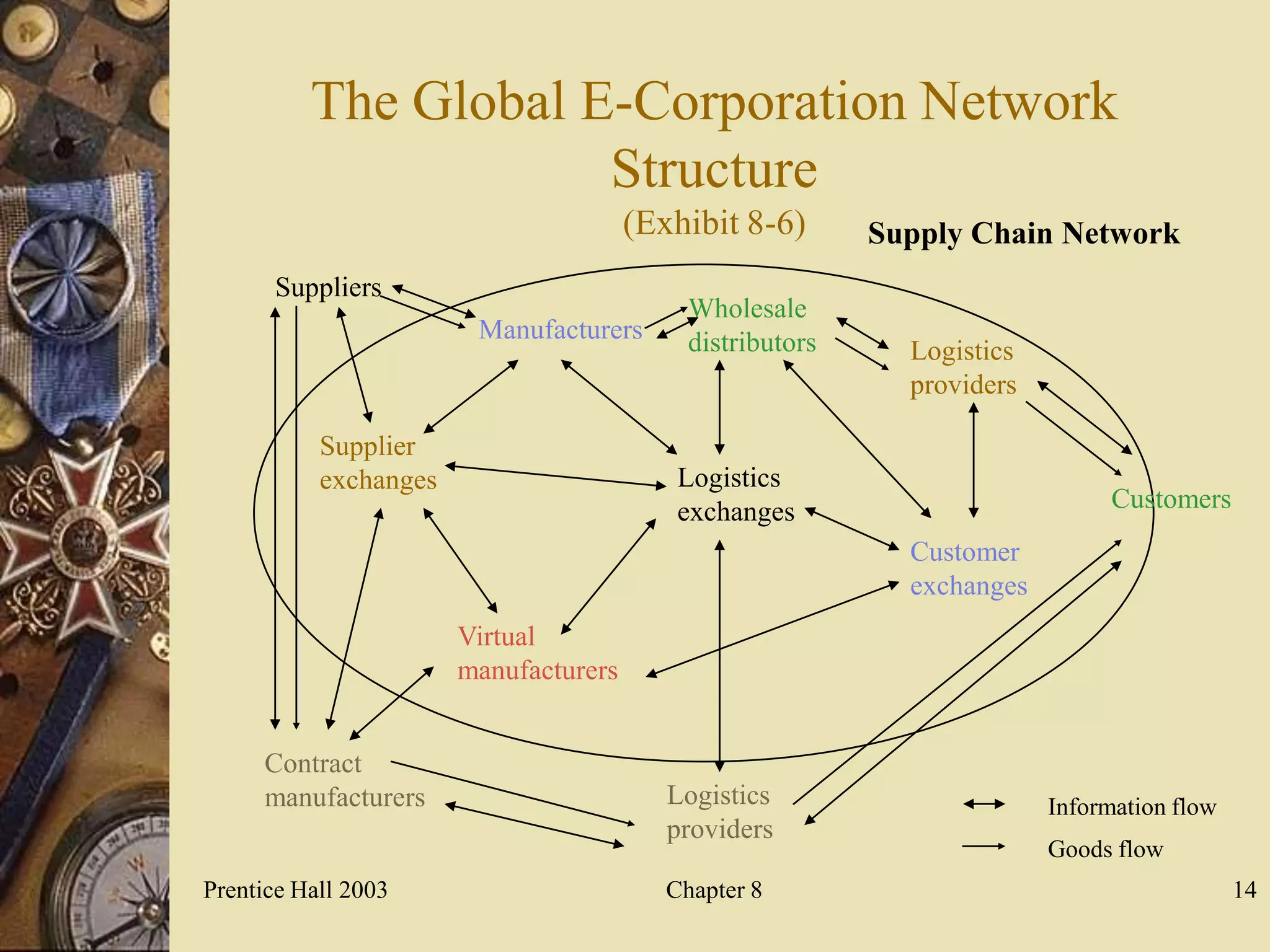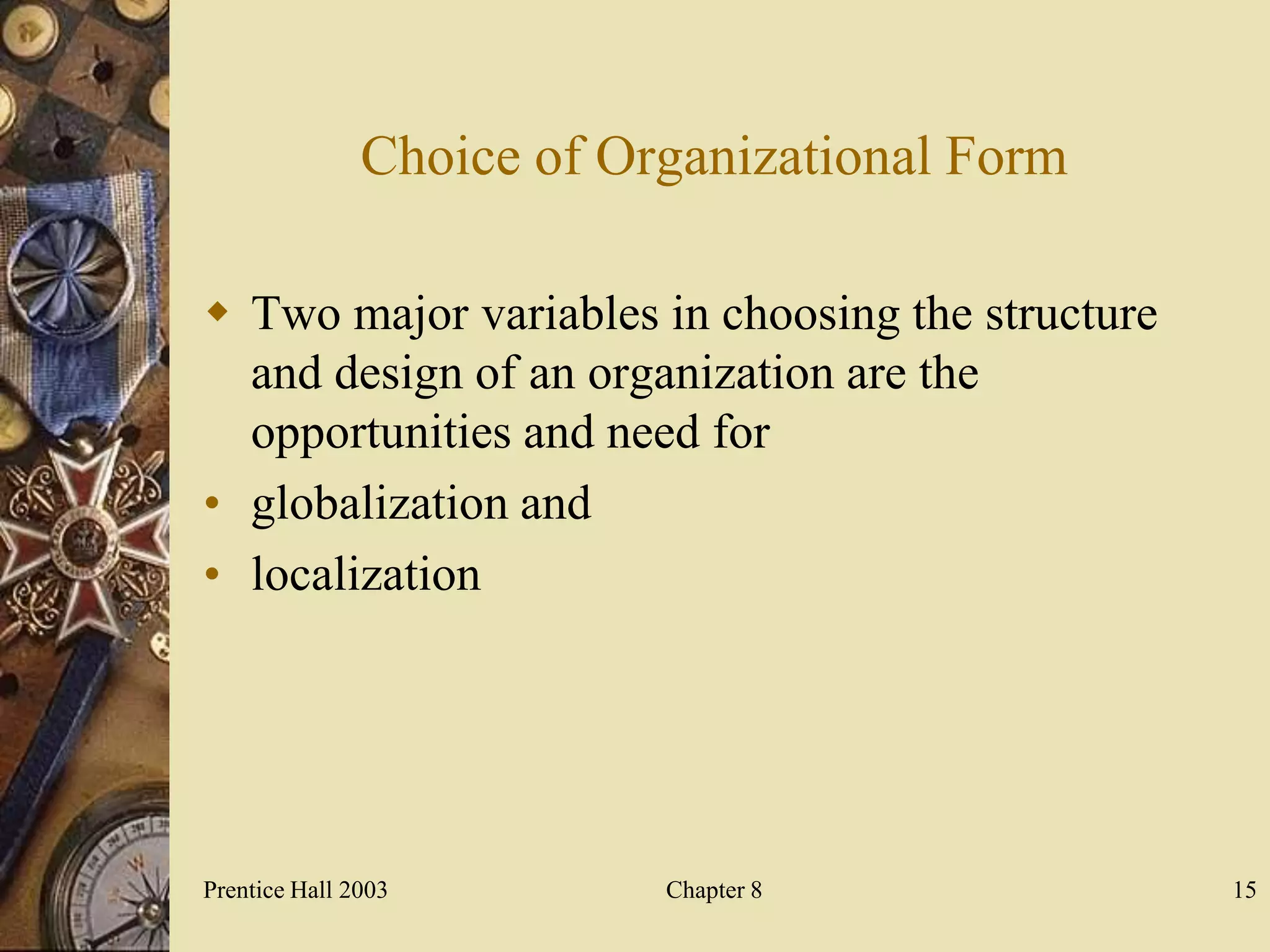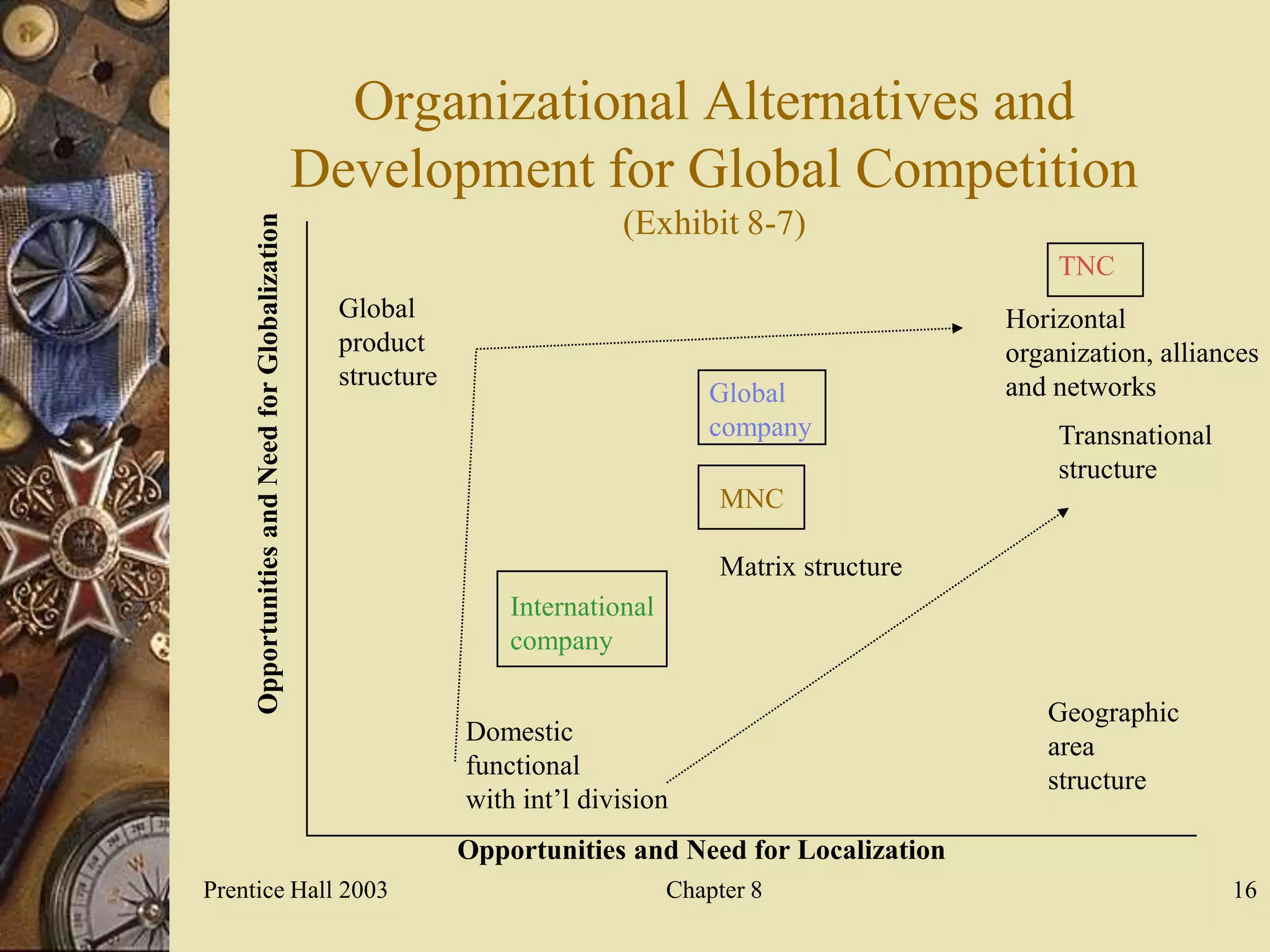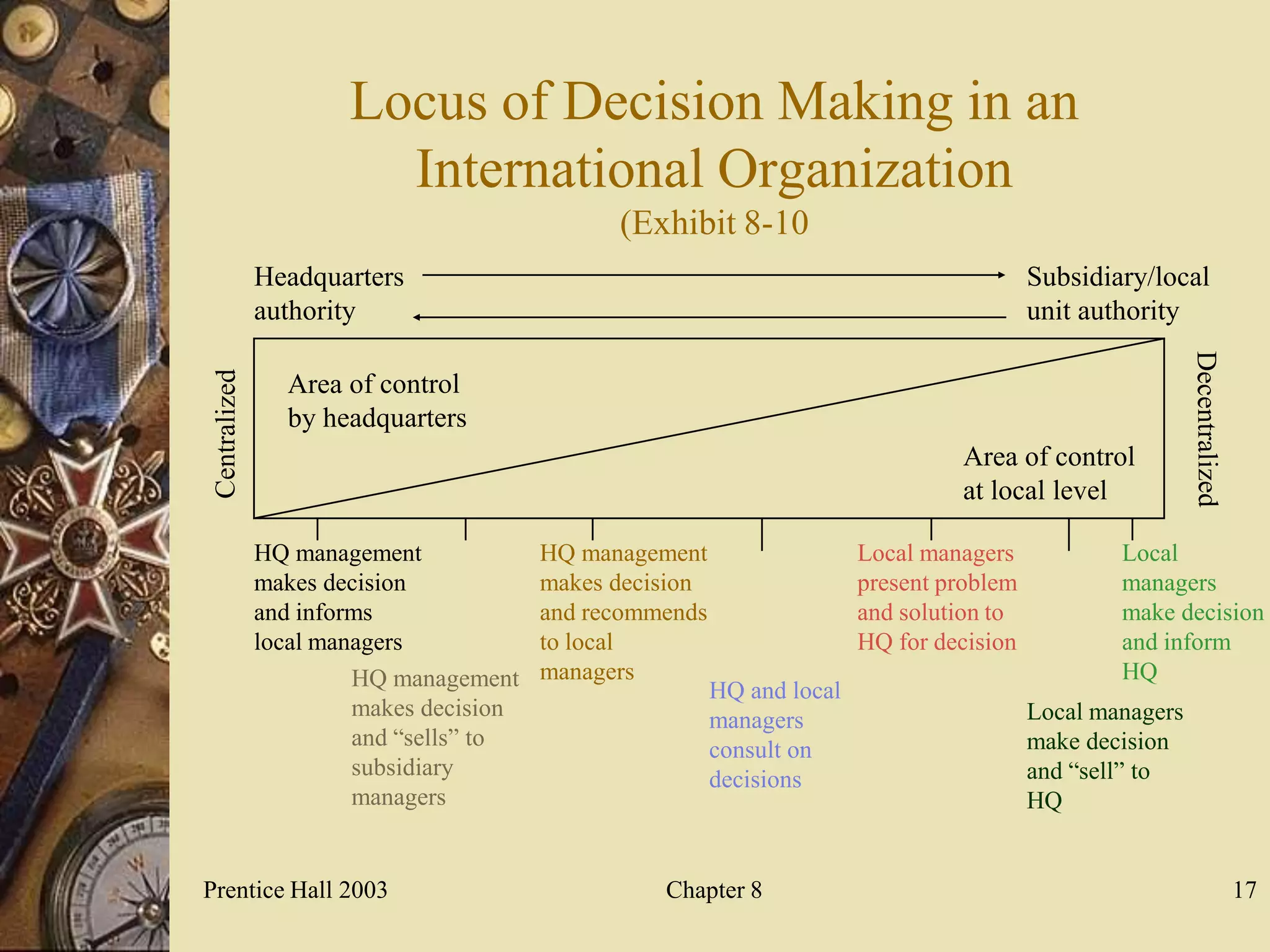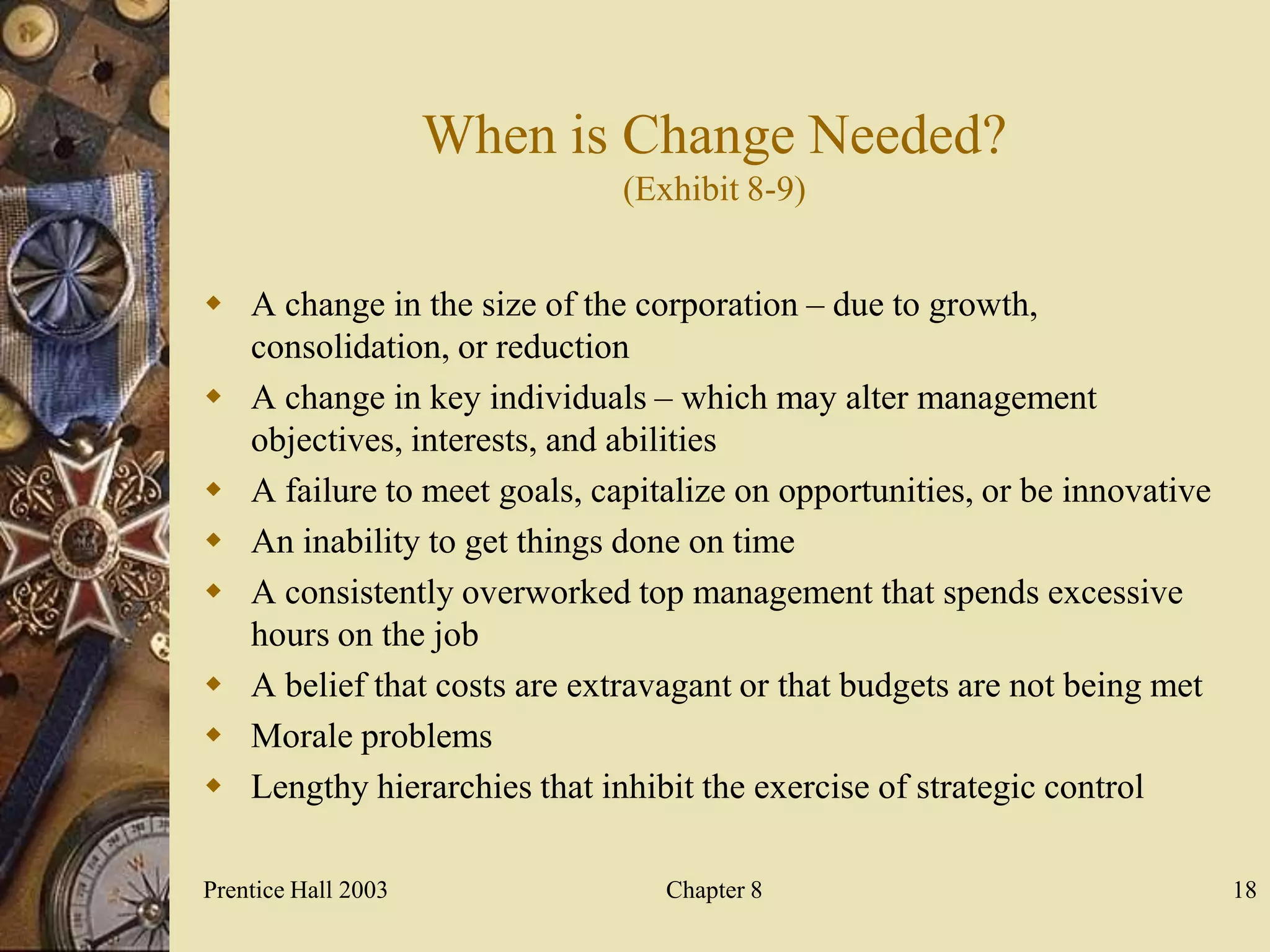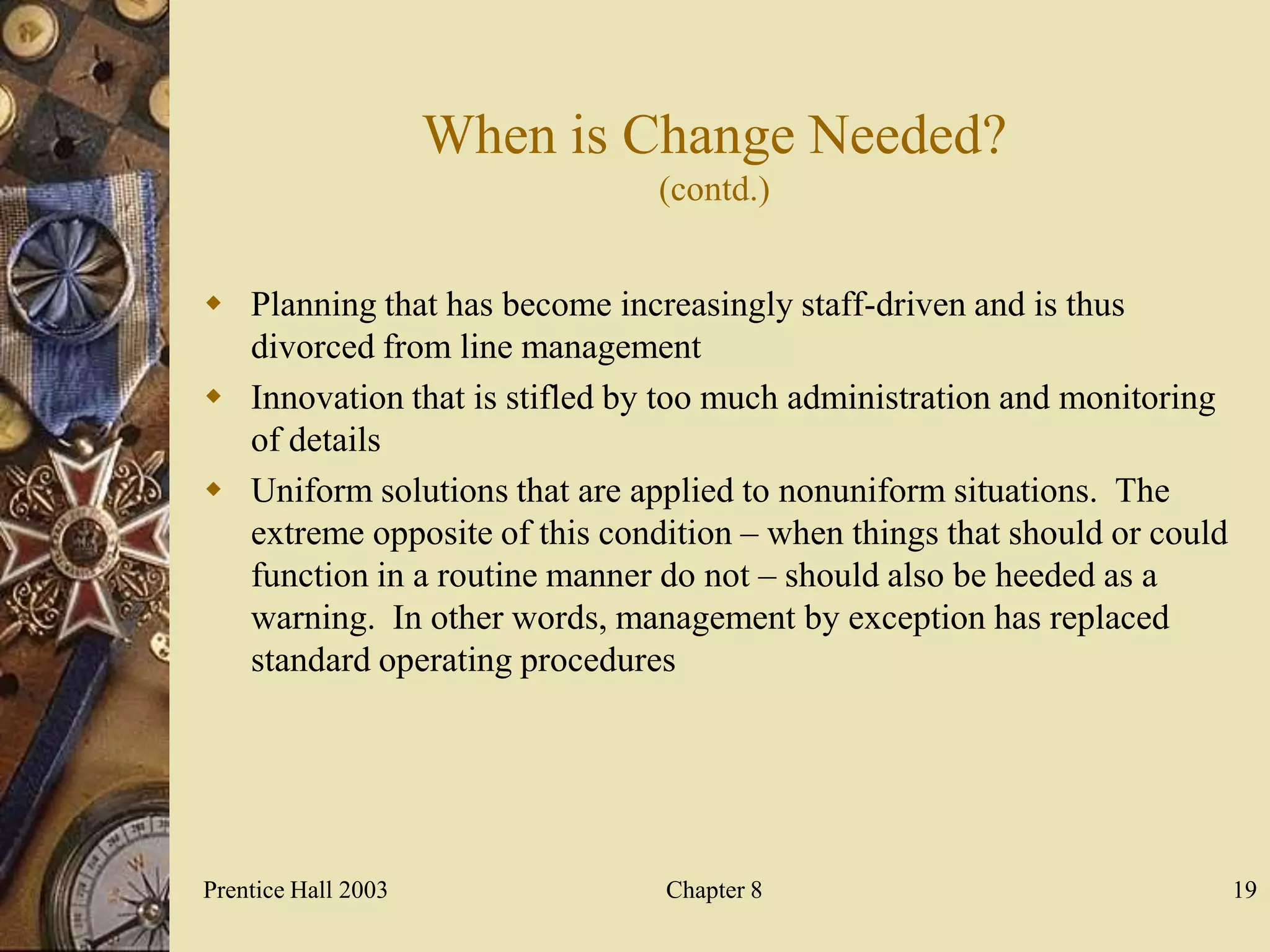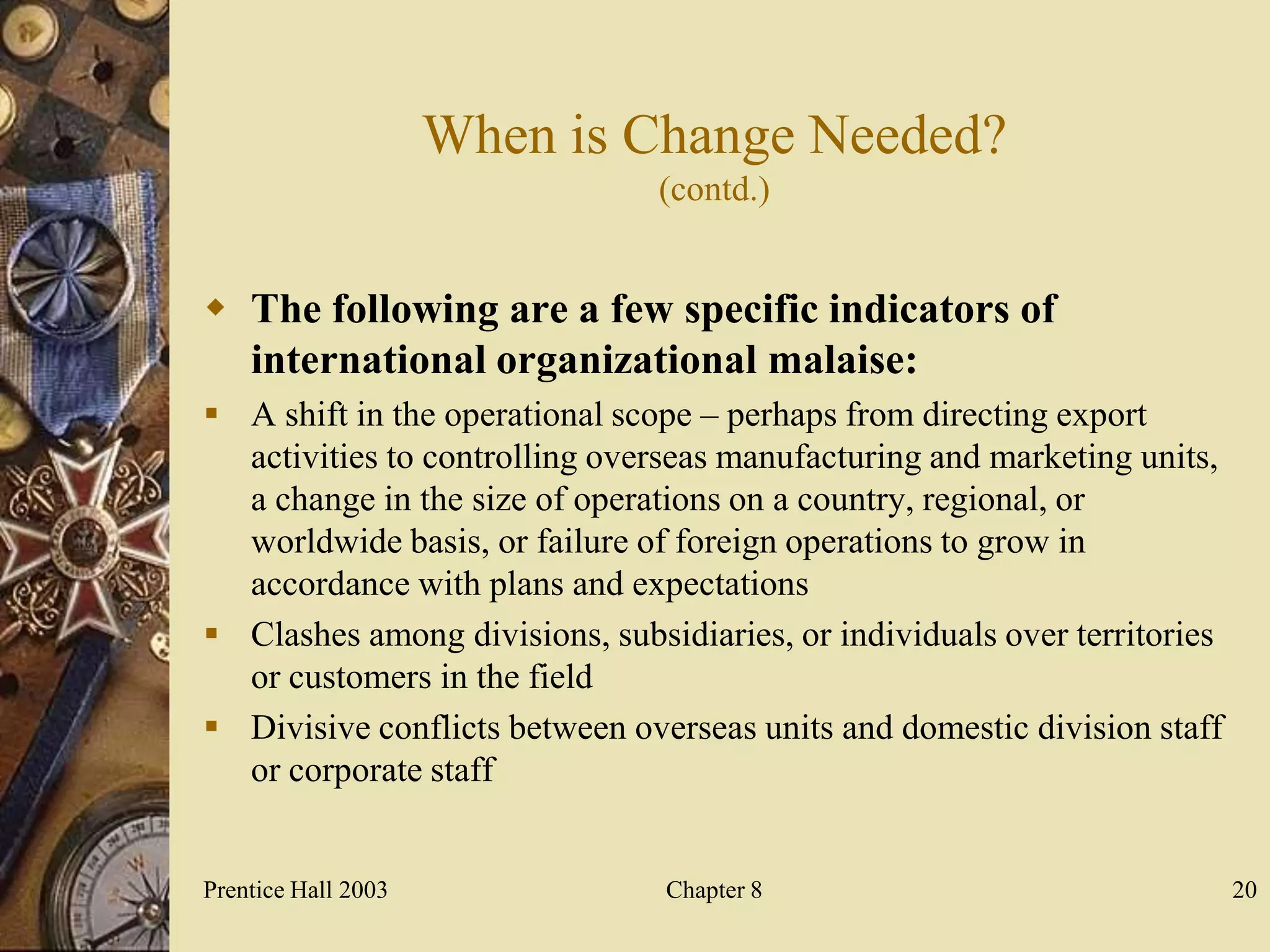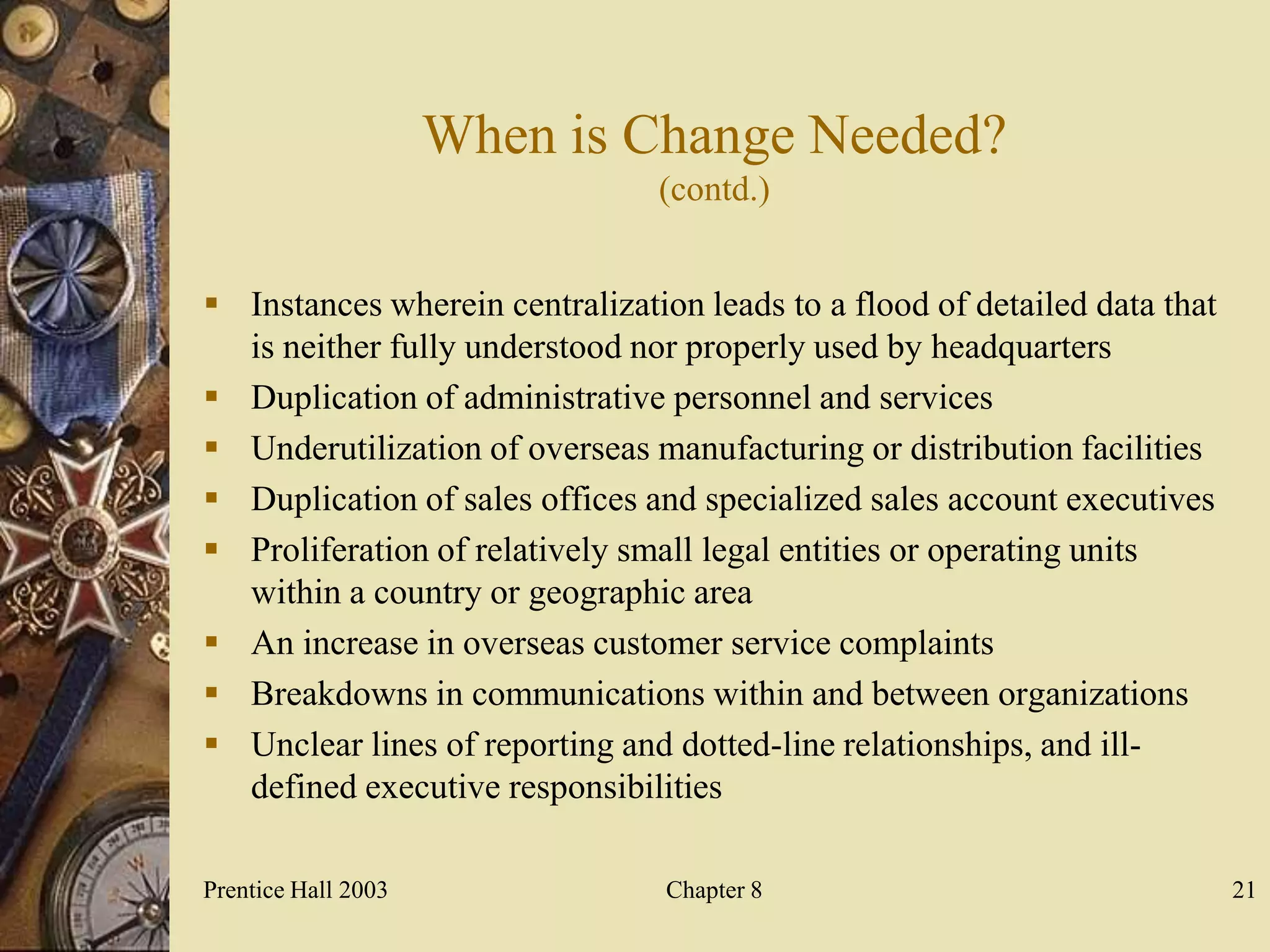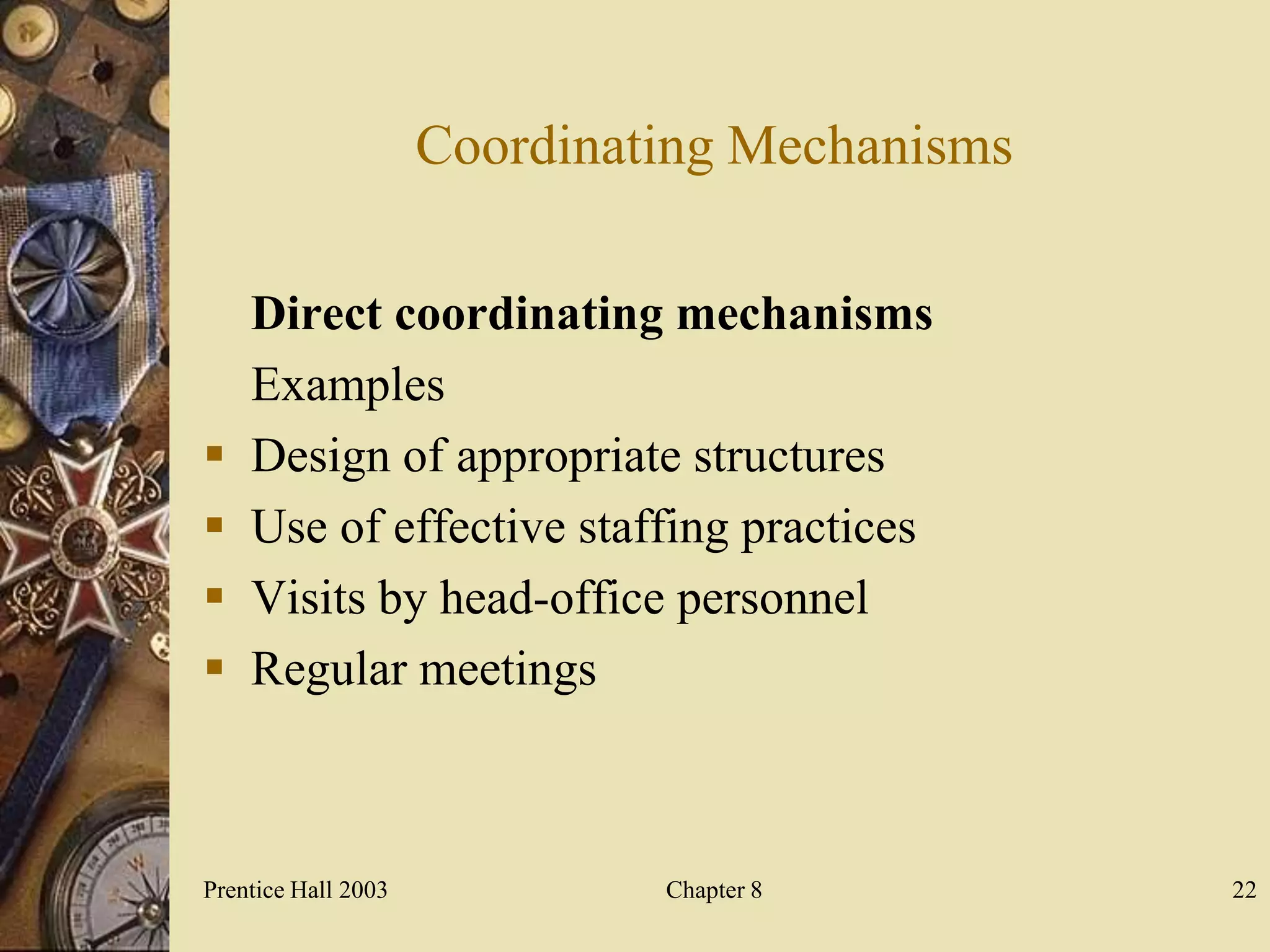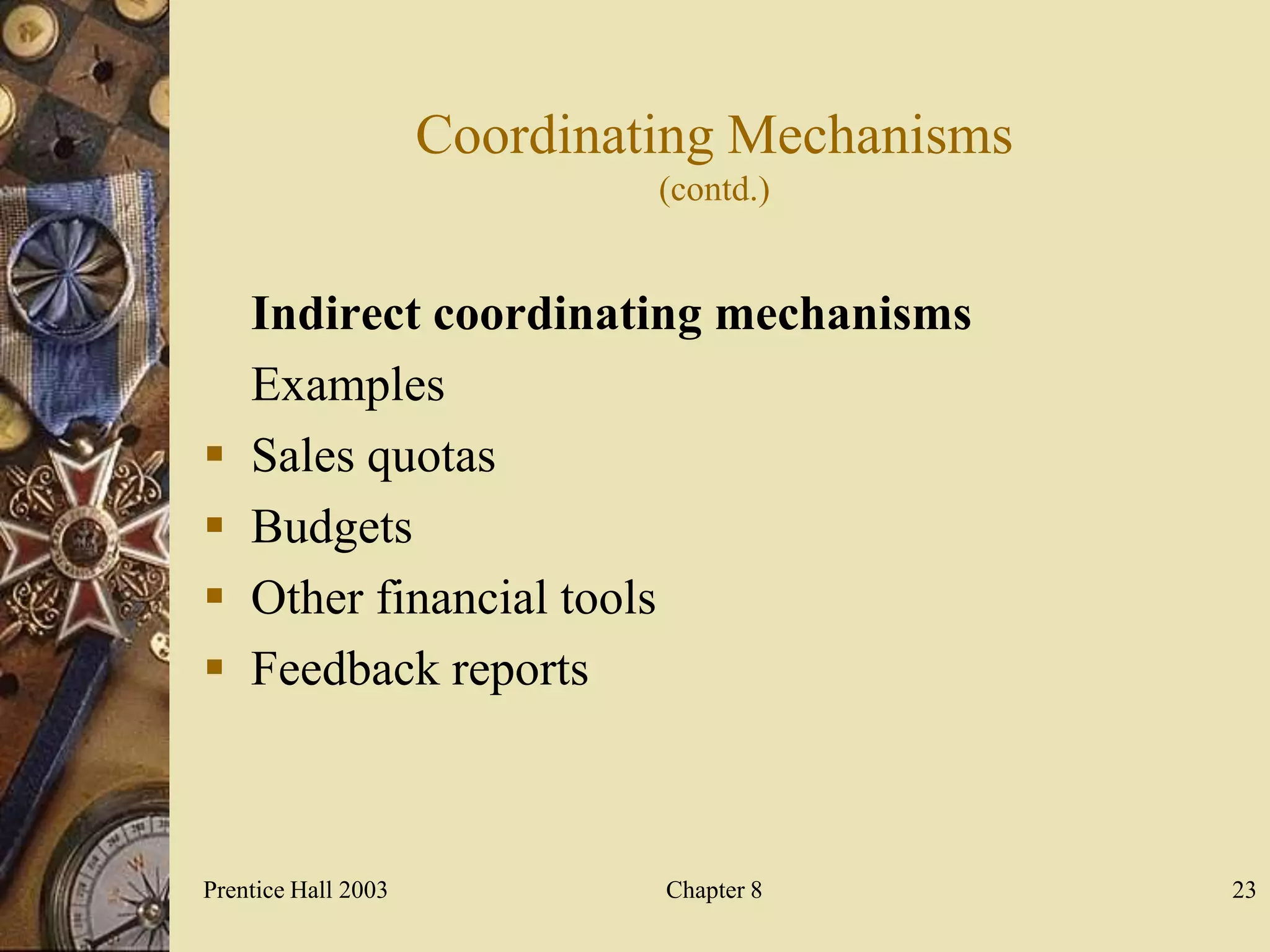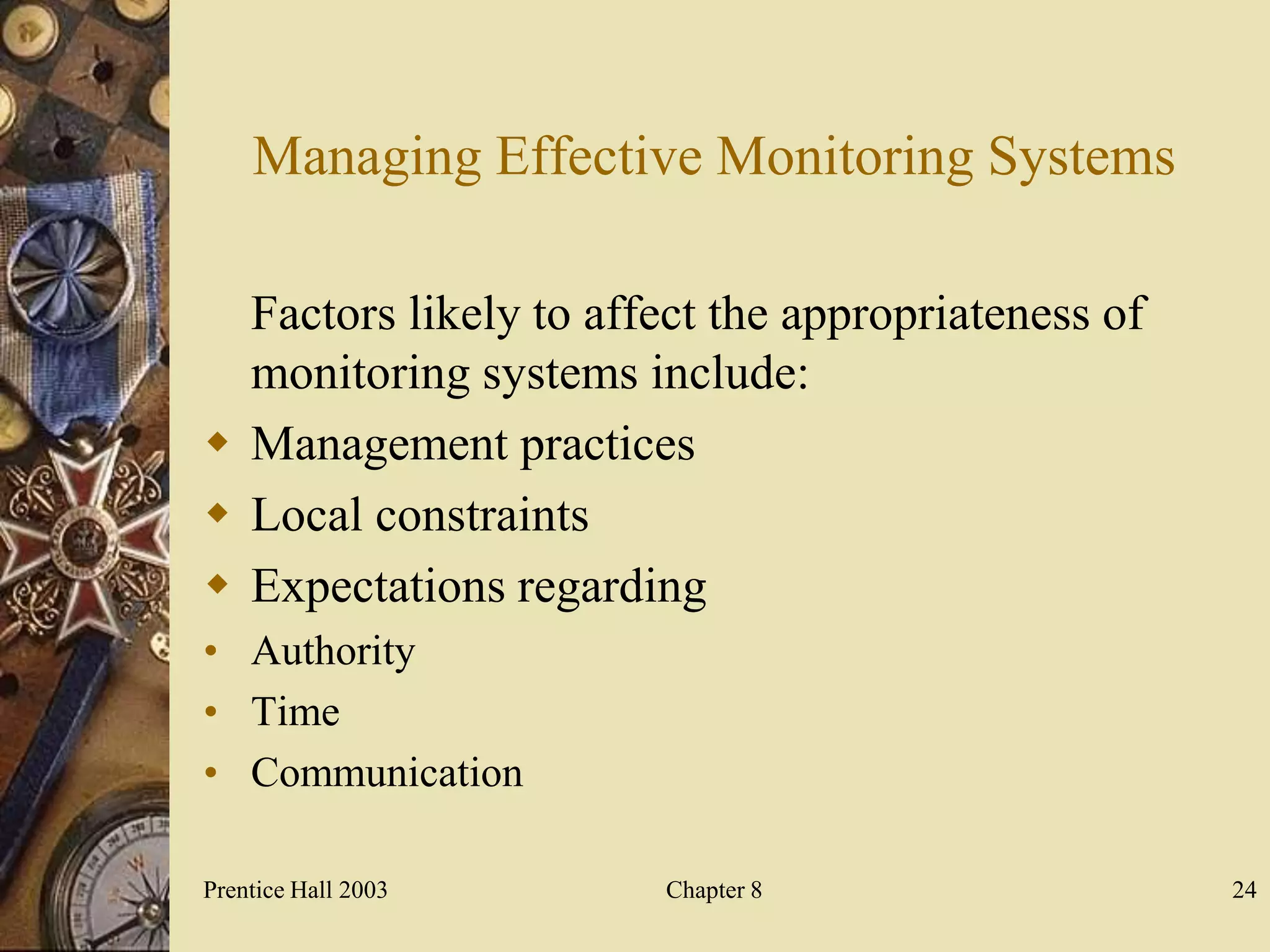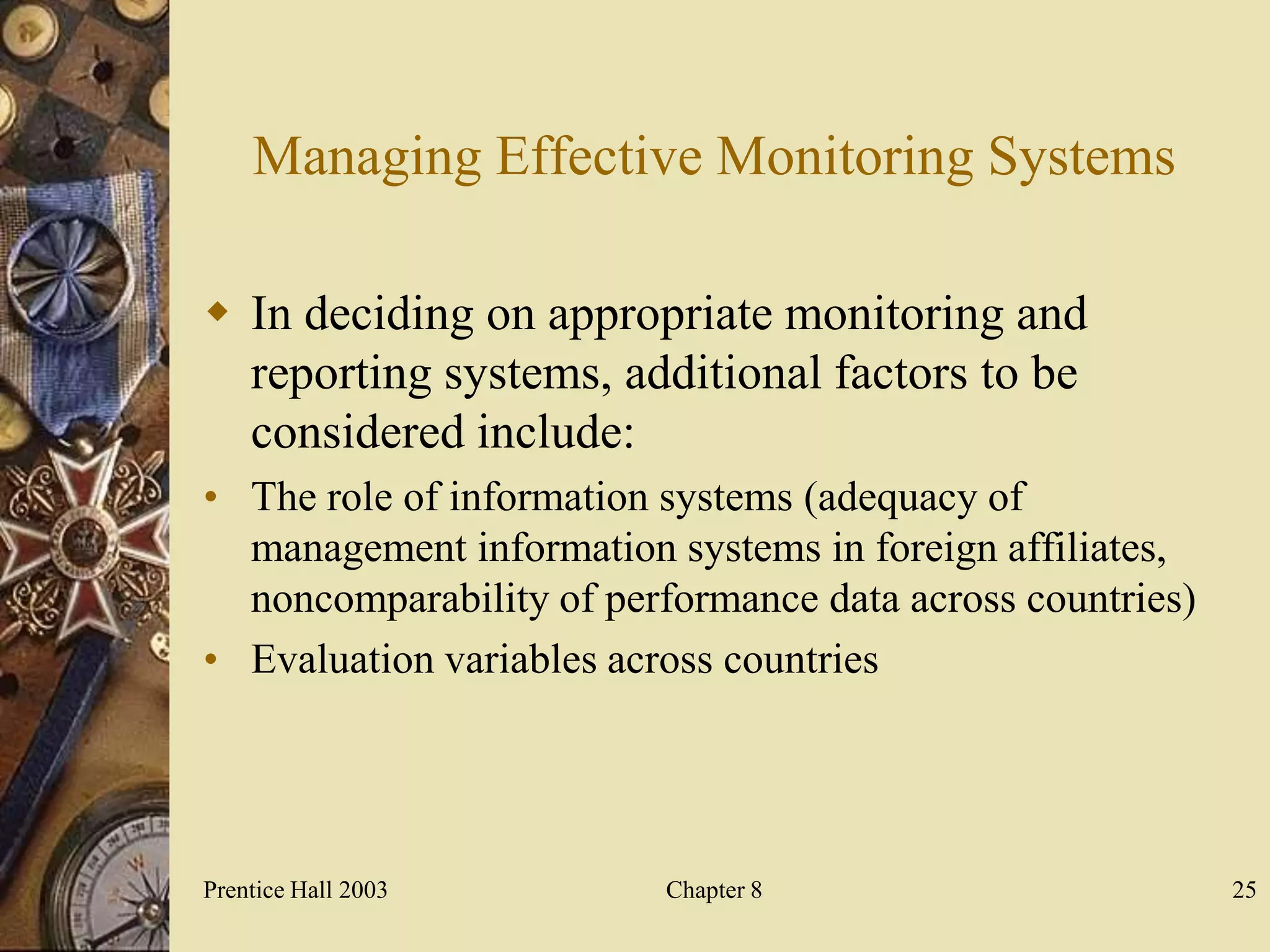This chapter discusses organization structures for multinational corporations, including domestic structures expanded for international operations, international divisions, global functional structures, and global geographic structures. It also covers control systems for global operations and managing effective monitoring across different countries and cultures. Emergent forms like networks and alliances are discussed. Factors in choosing structures include opportunities for globalization and localization.
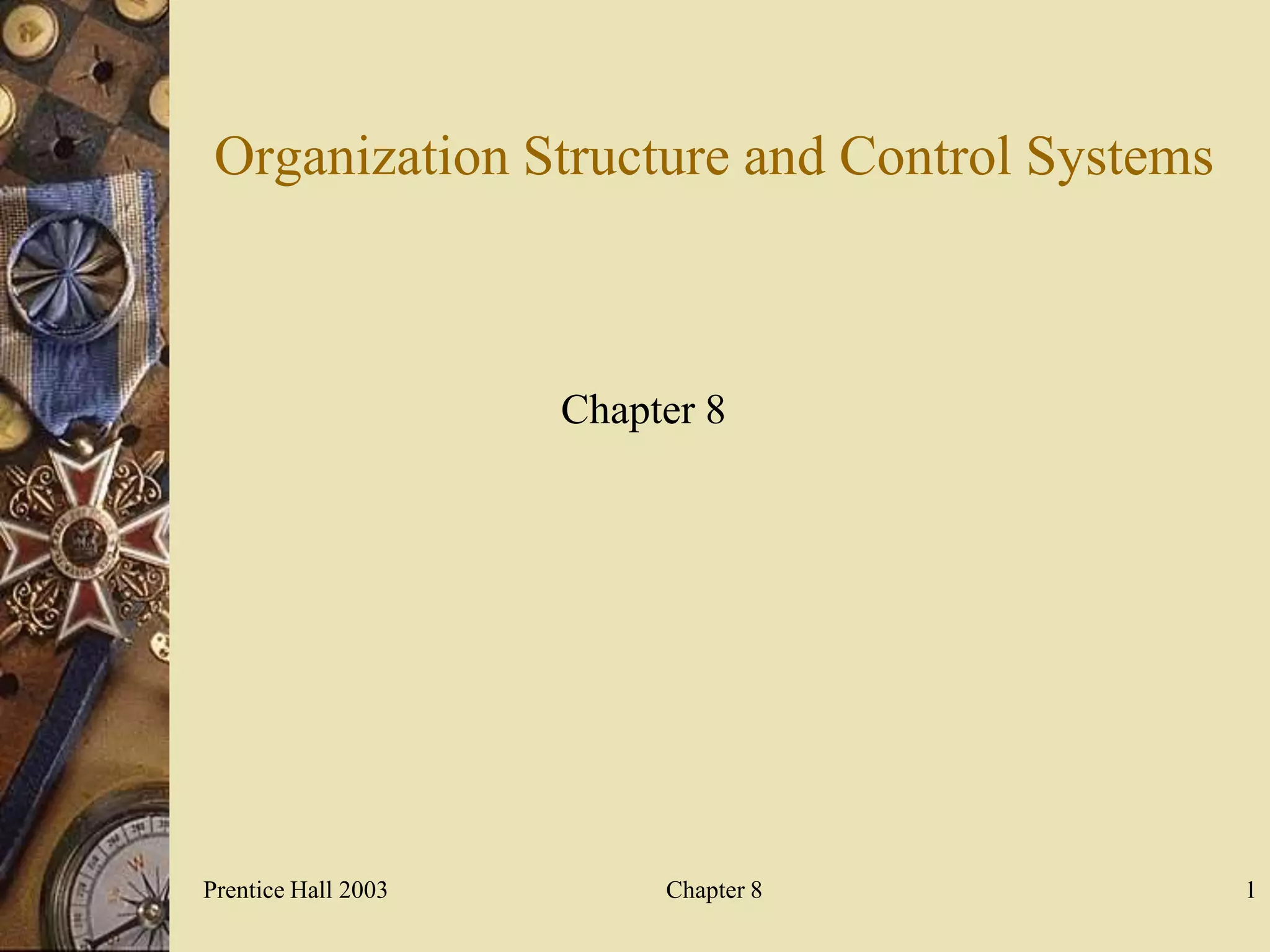
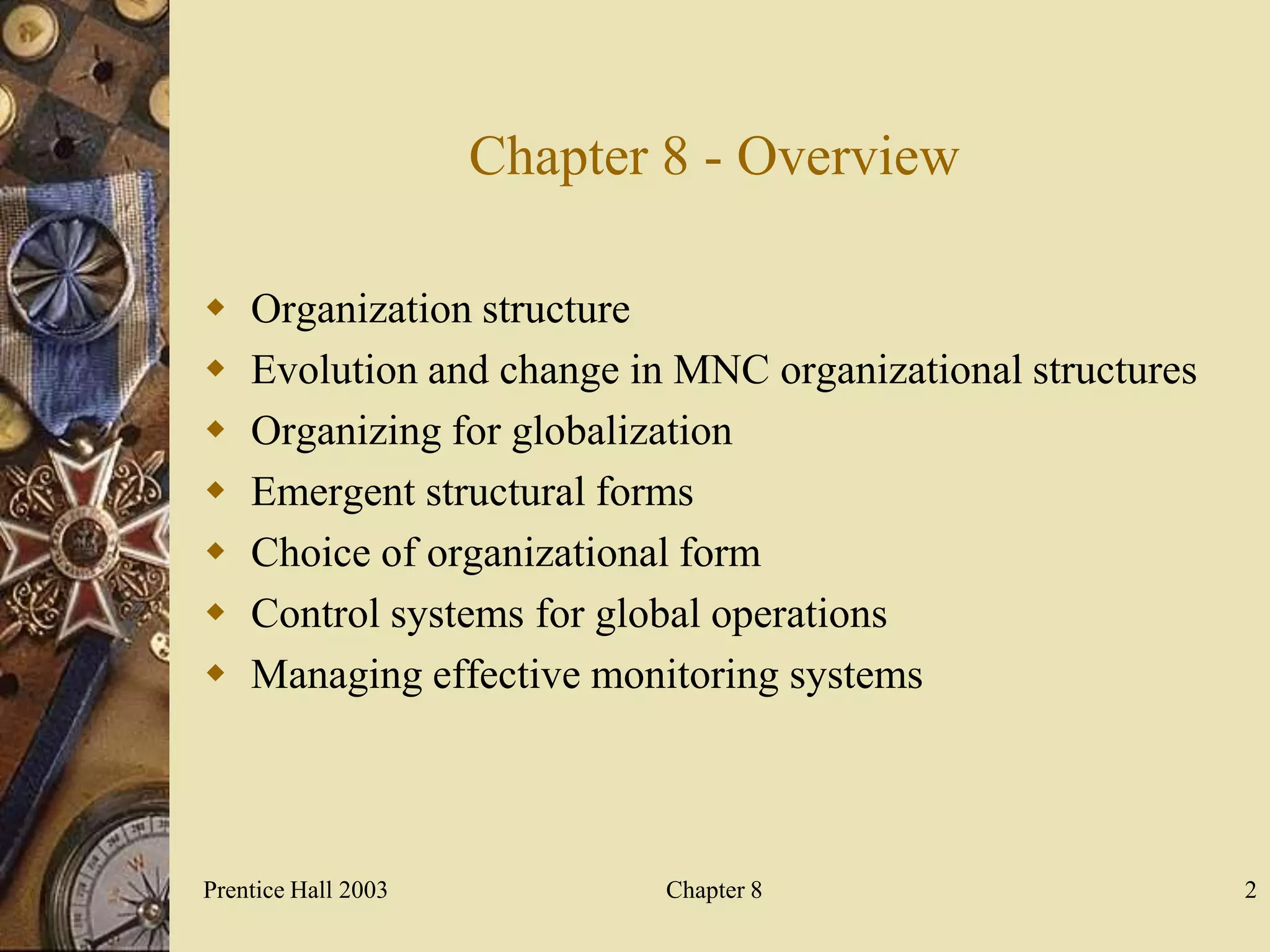
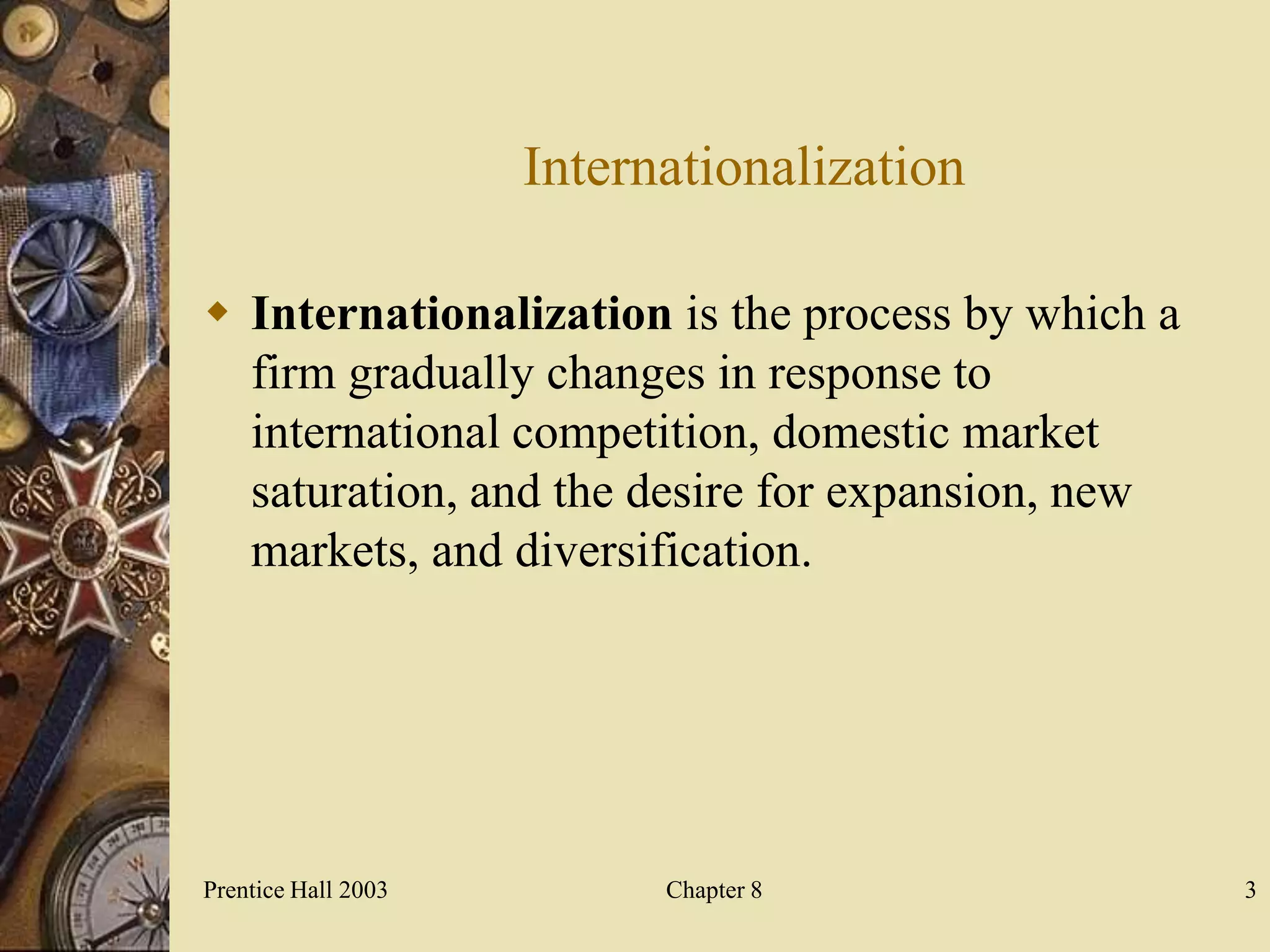
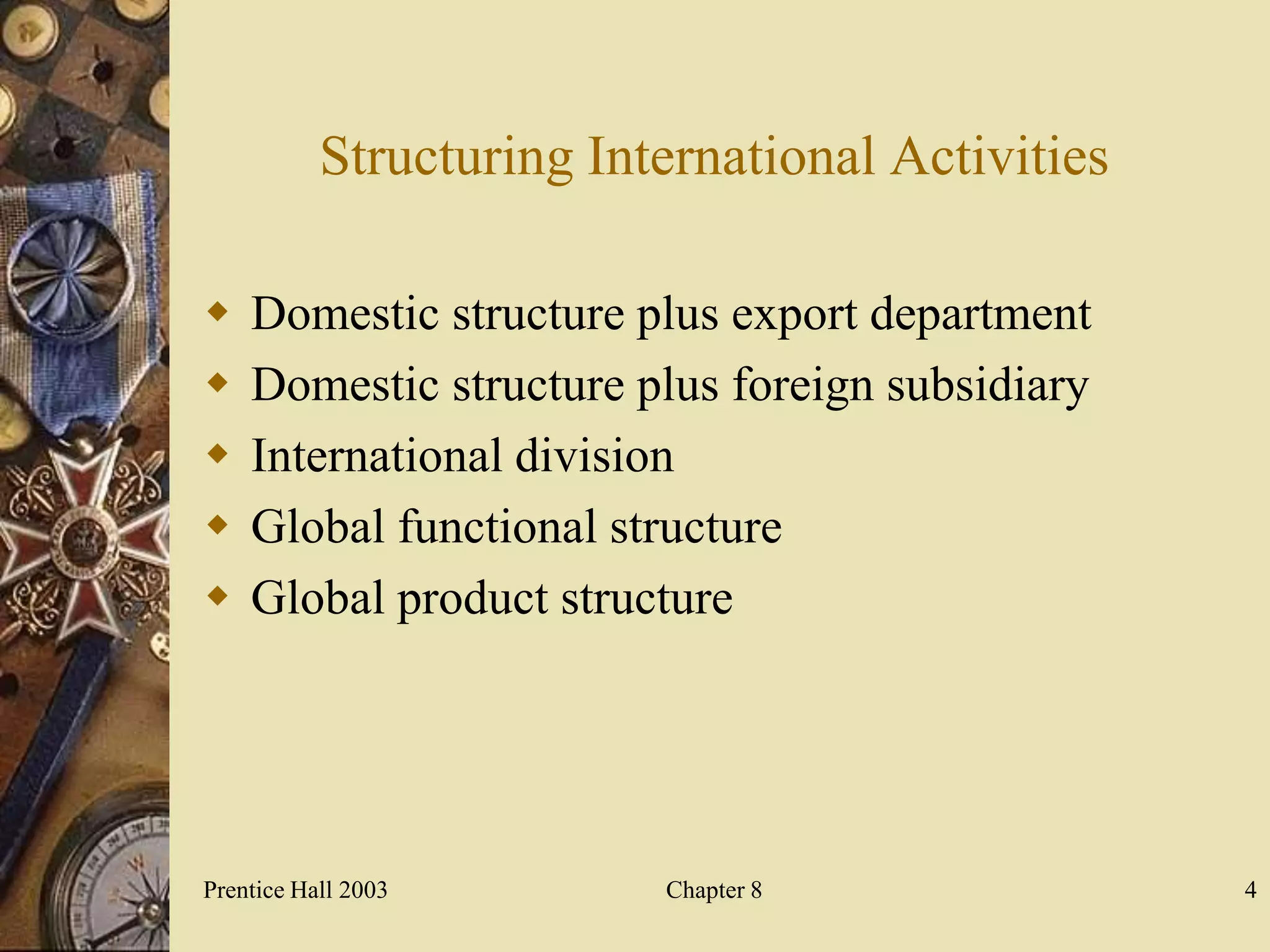
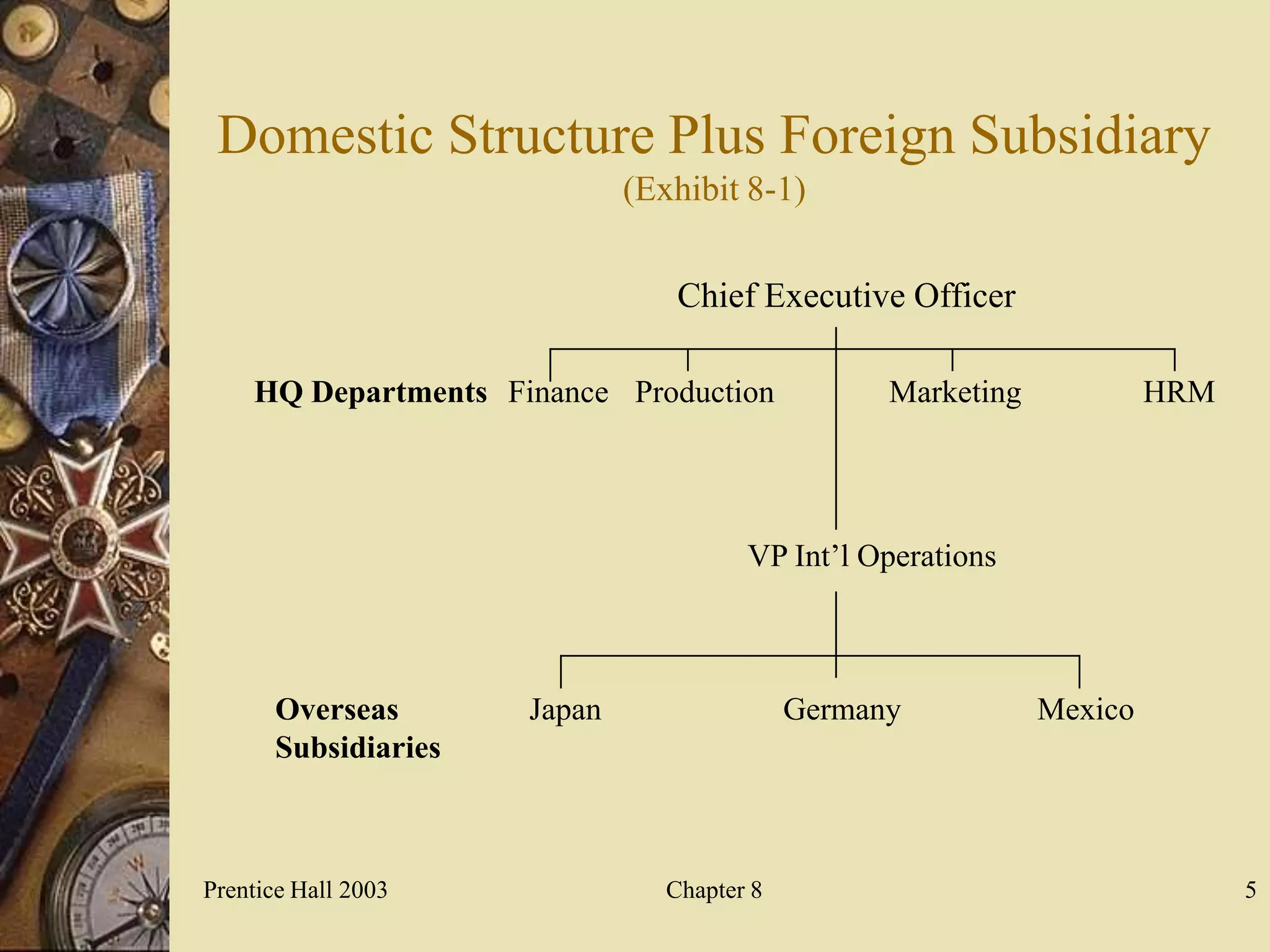
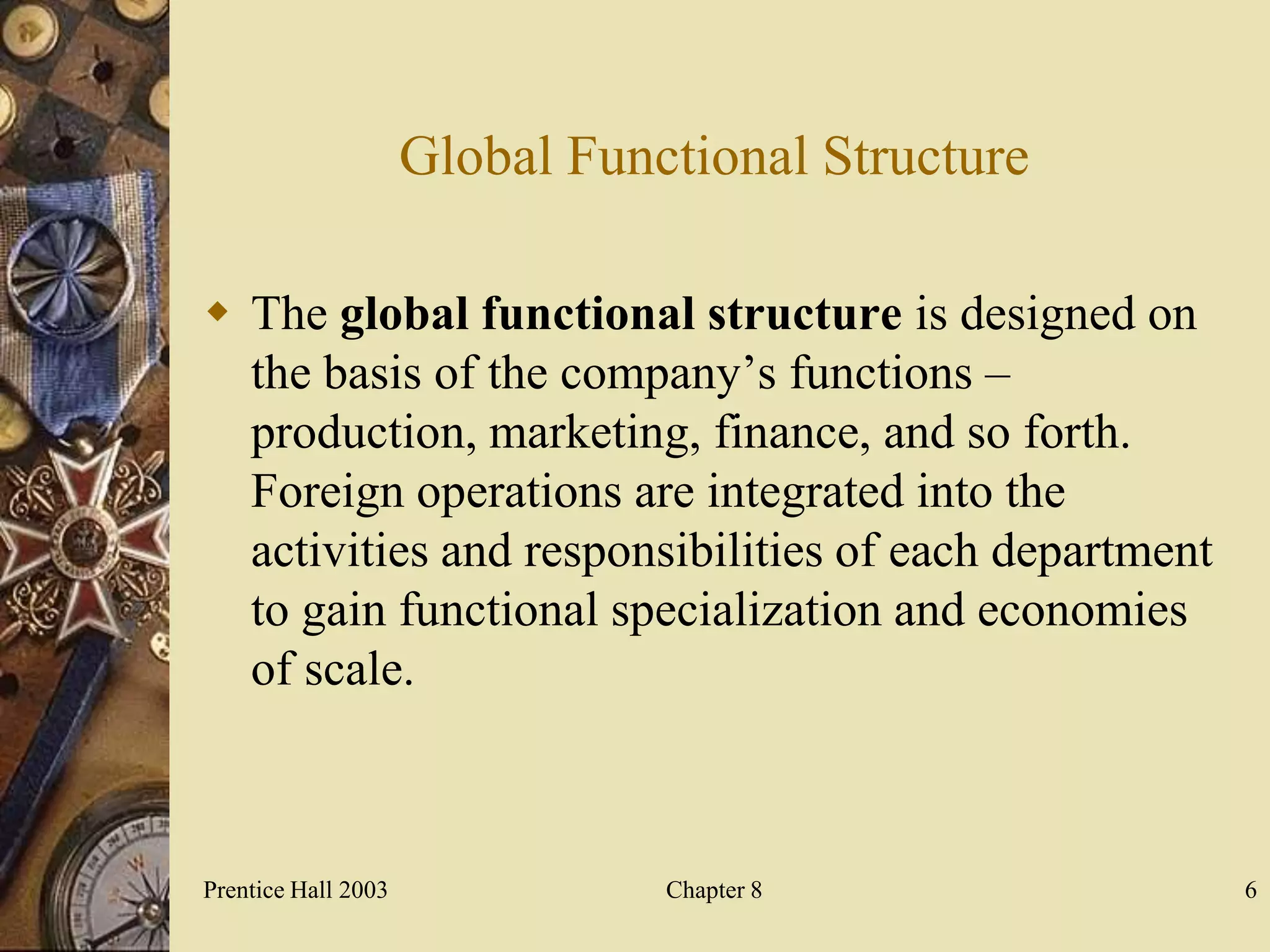
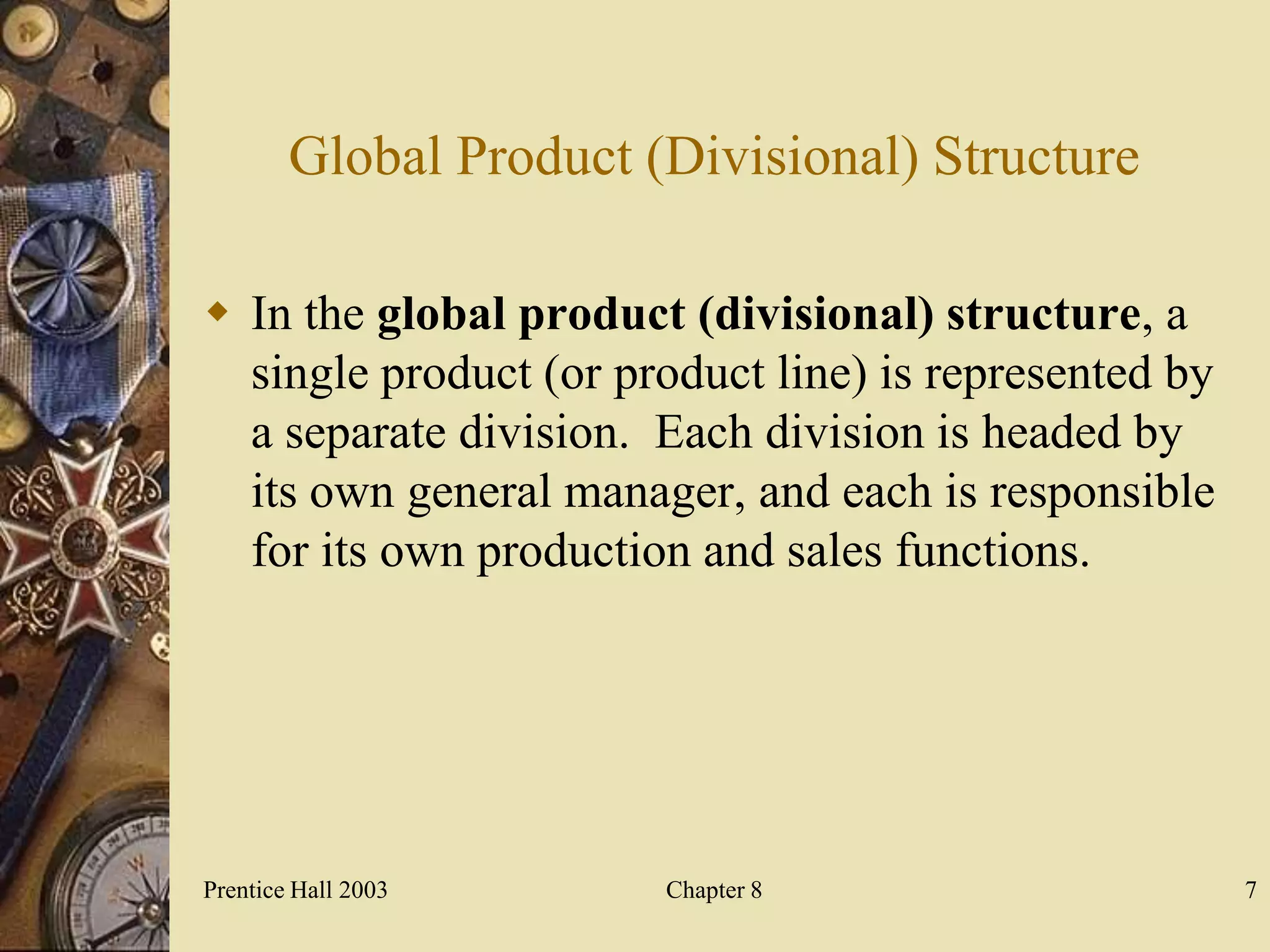
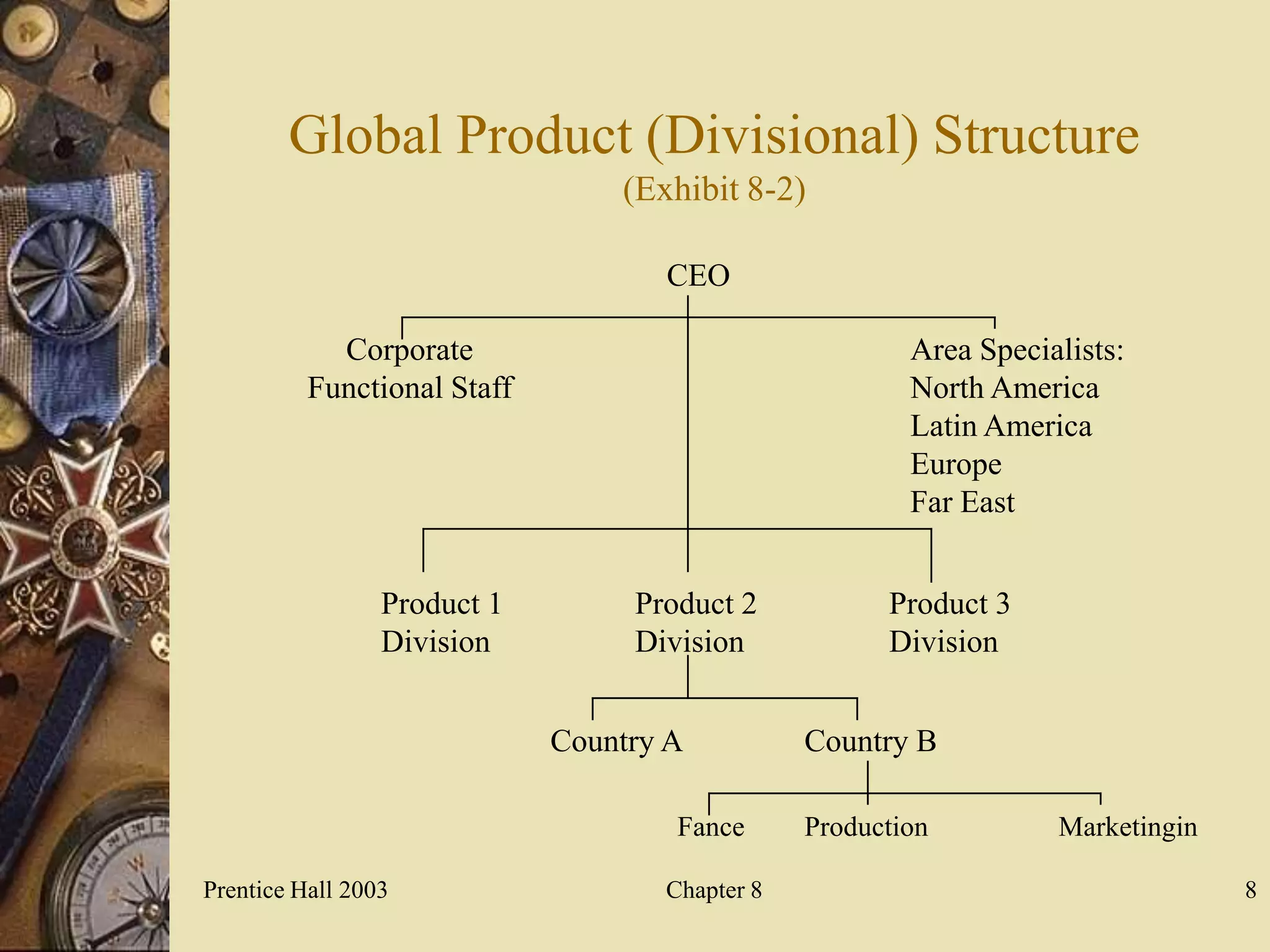
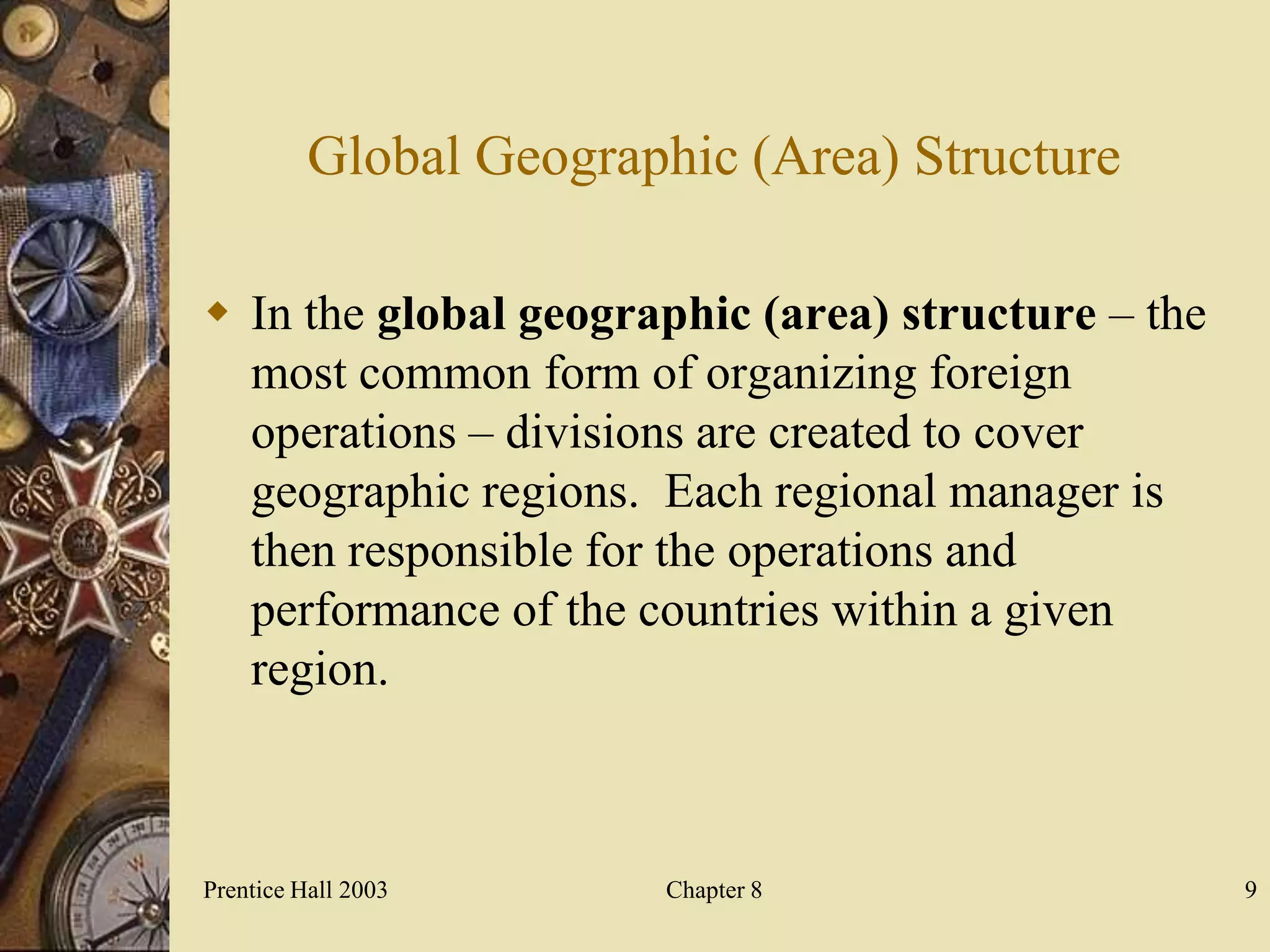

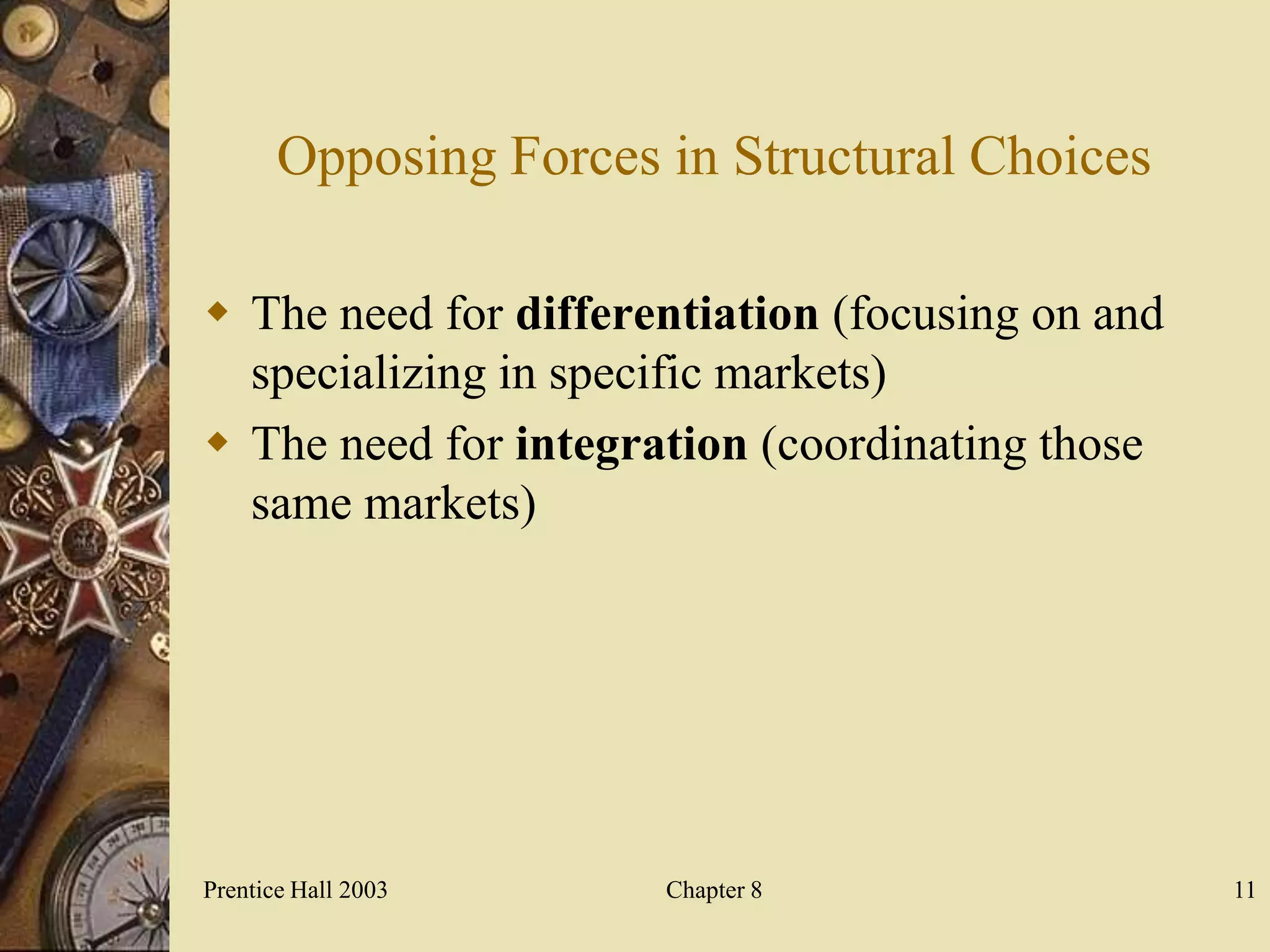
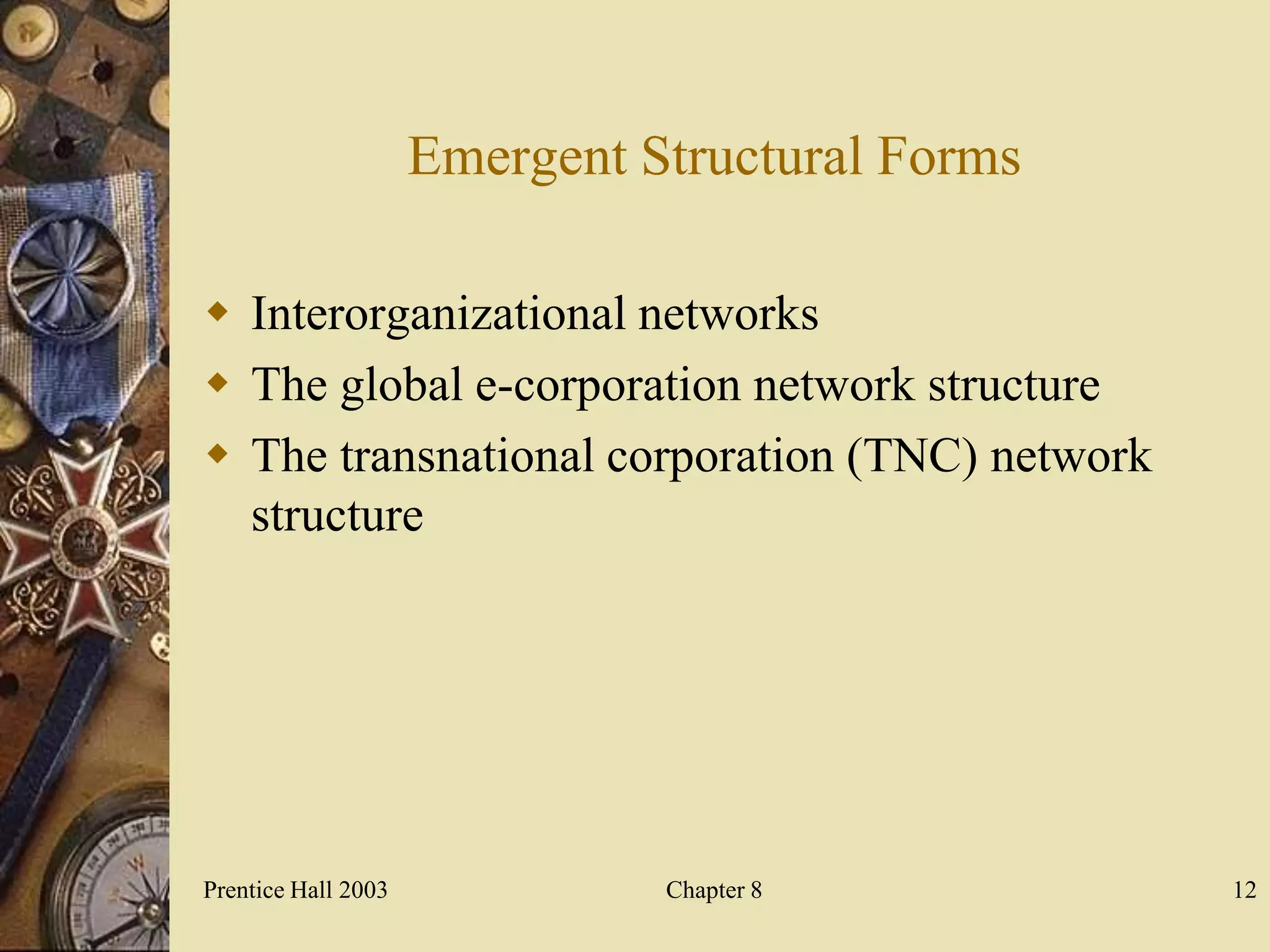
![Information Technology’s Impact on
Organizational Forms
“Competitive companies in the future will be
elaborate networks of people and information,
each exerting an influence on the other. [These
networks will comprise] a small hub of staff
connected to each other by their physical
proximity, which is electronically connected to
global associates who help control assets and
negotiate agreements to extend the company’s
business influence.”
Kilmann
Prentice Hall 2003 Chapter 8 13](https://image.slidesharecdn.com/b7521uam7a1organizationstructure06232011-13398818672448-phpapp02-120616162714-phpapp02/75/B7521-Ua-M7-A1-Organization-Structure-06-23-2011-13-2048.jpg)
